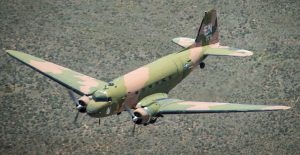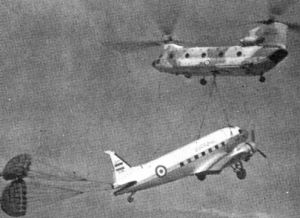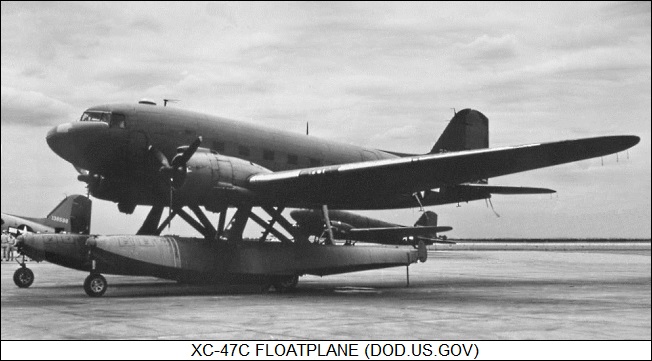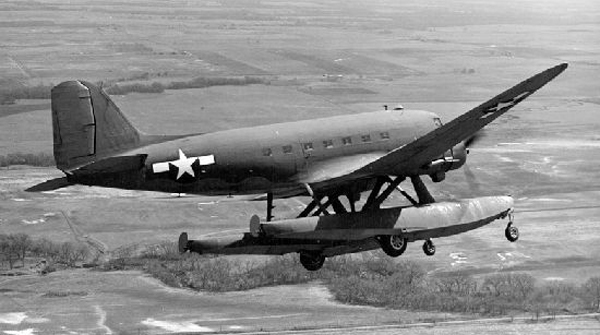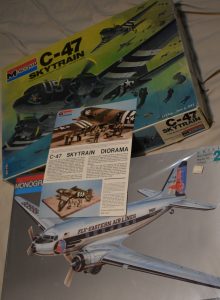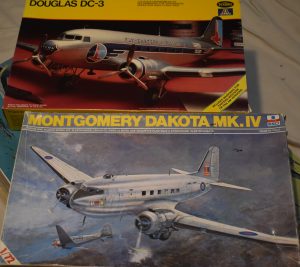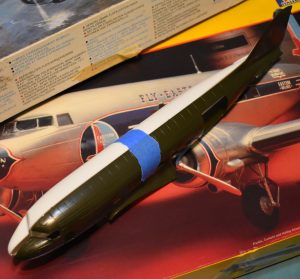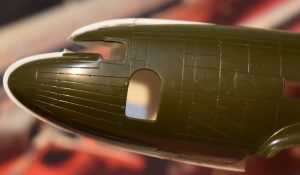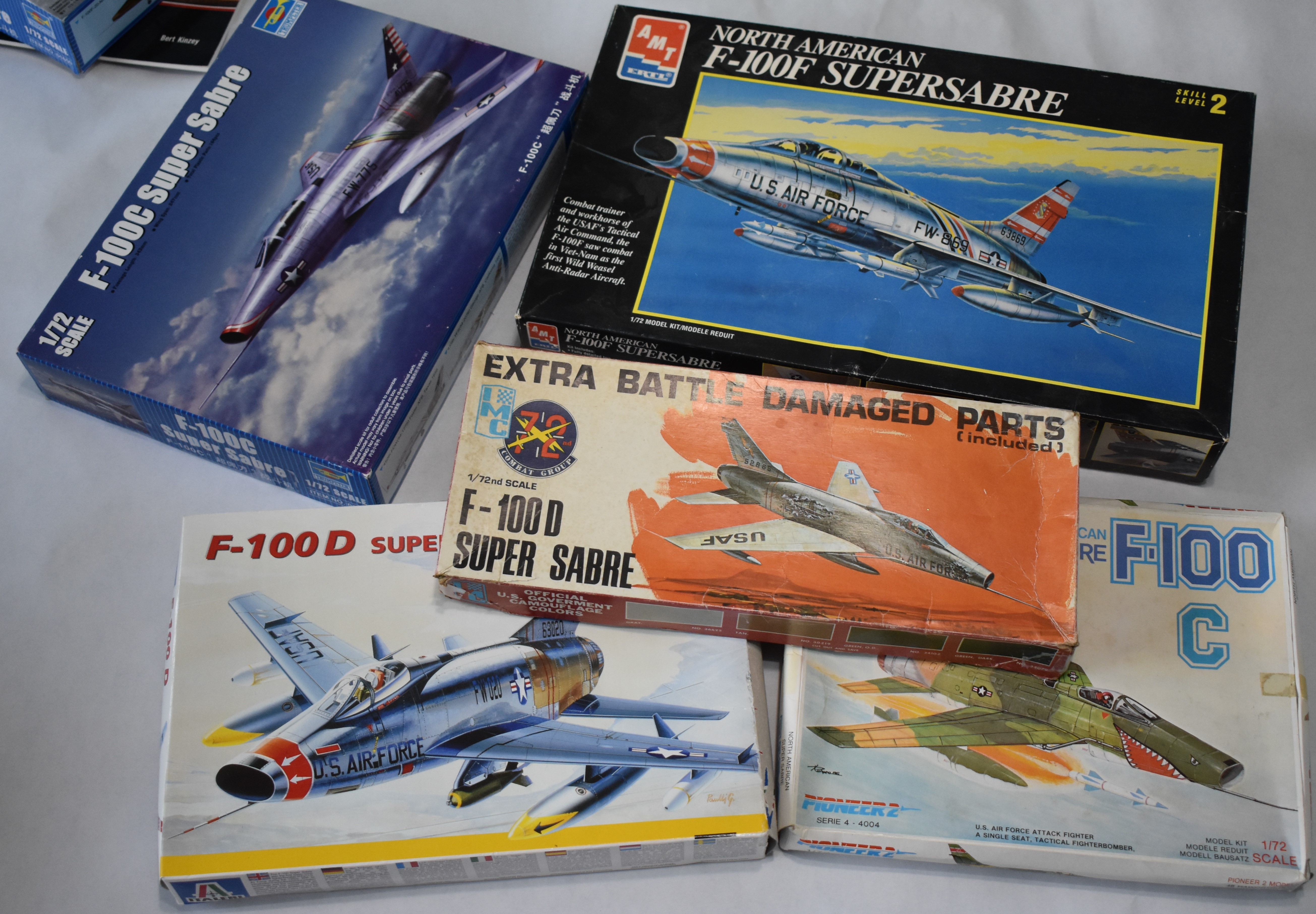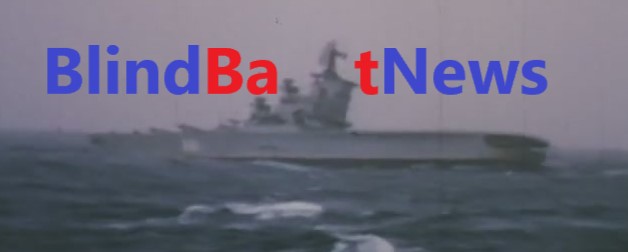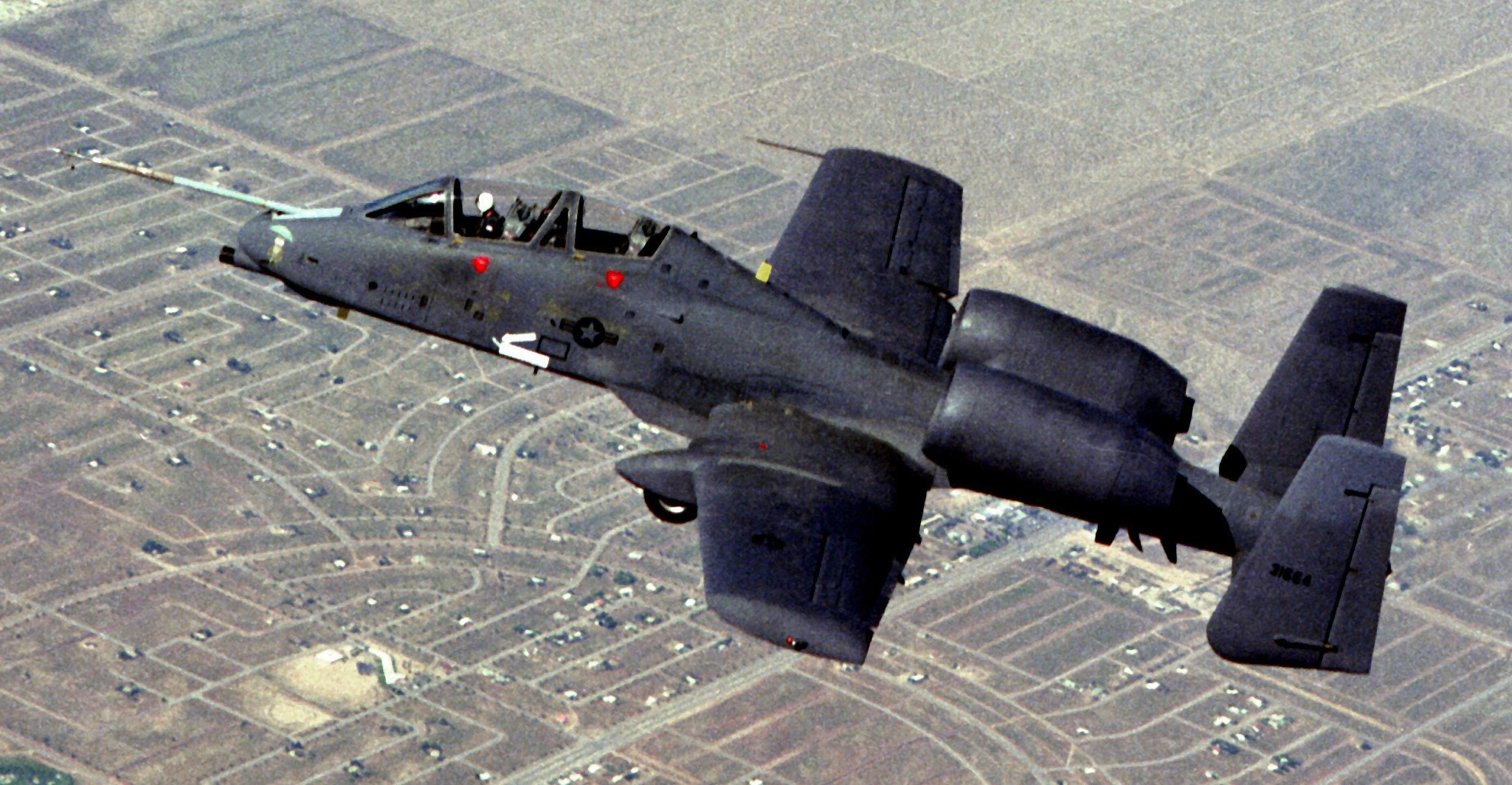
The N/AW-10 over what looks like the beginning development of California City, near Edwards Air Force Base, 04MAY1979. Photographer not known.
The two seat A-10 had a very short service life, brought to an end by rapid advances in technology, specifically the LANTIRN (Low Altitude Navigation Targeting Infrared Night) pod system.
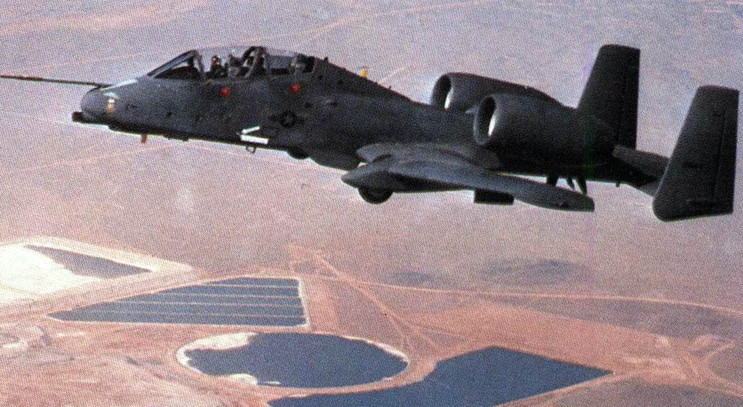
It was a conversion of the first pre-production A-10 Thunderbolt-2, and was initially called Night/Adverse Weather-10 , or N/AW-10. But, once the N/AW-10 conversion was completed the nomenclature was changed to YA-10B.
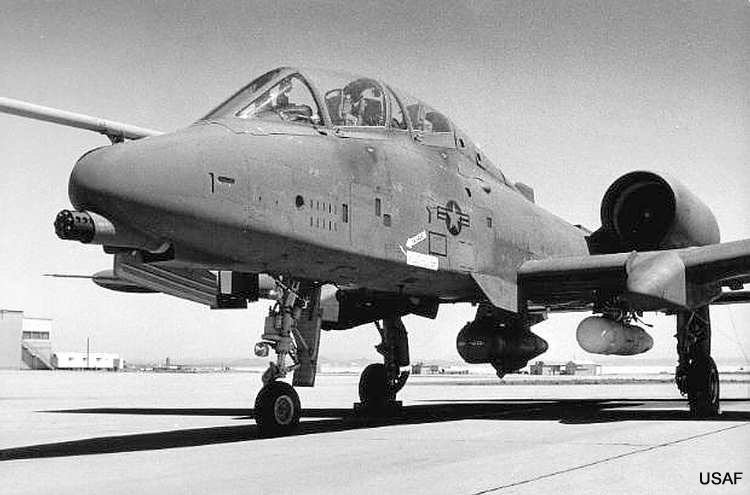
The ‘owl’ nose art has yet to be added.
First flight of the N/AW-10 was 04MAY1979.
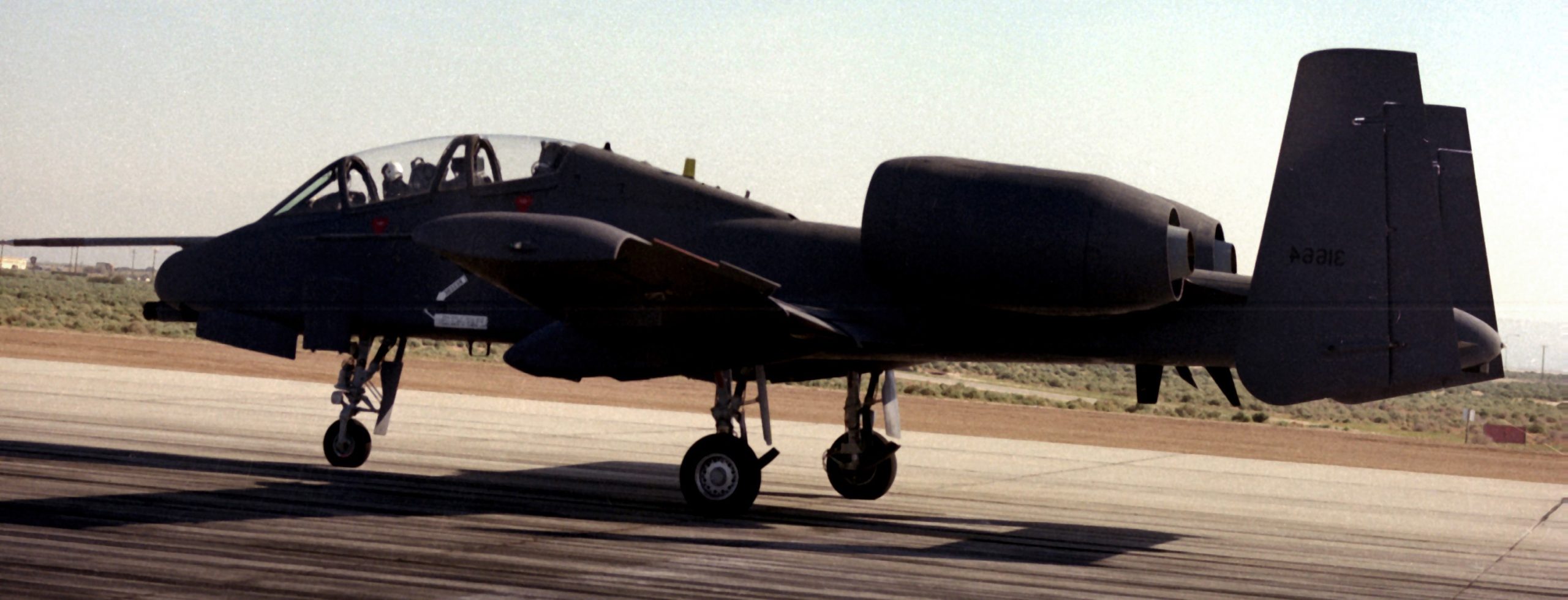
Edwards AFB, 04MAY1979, photographer not known.
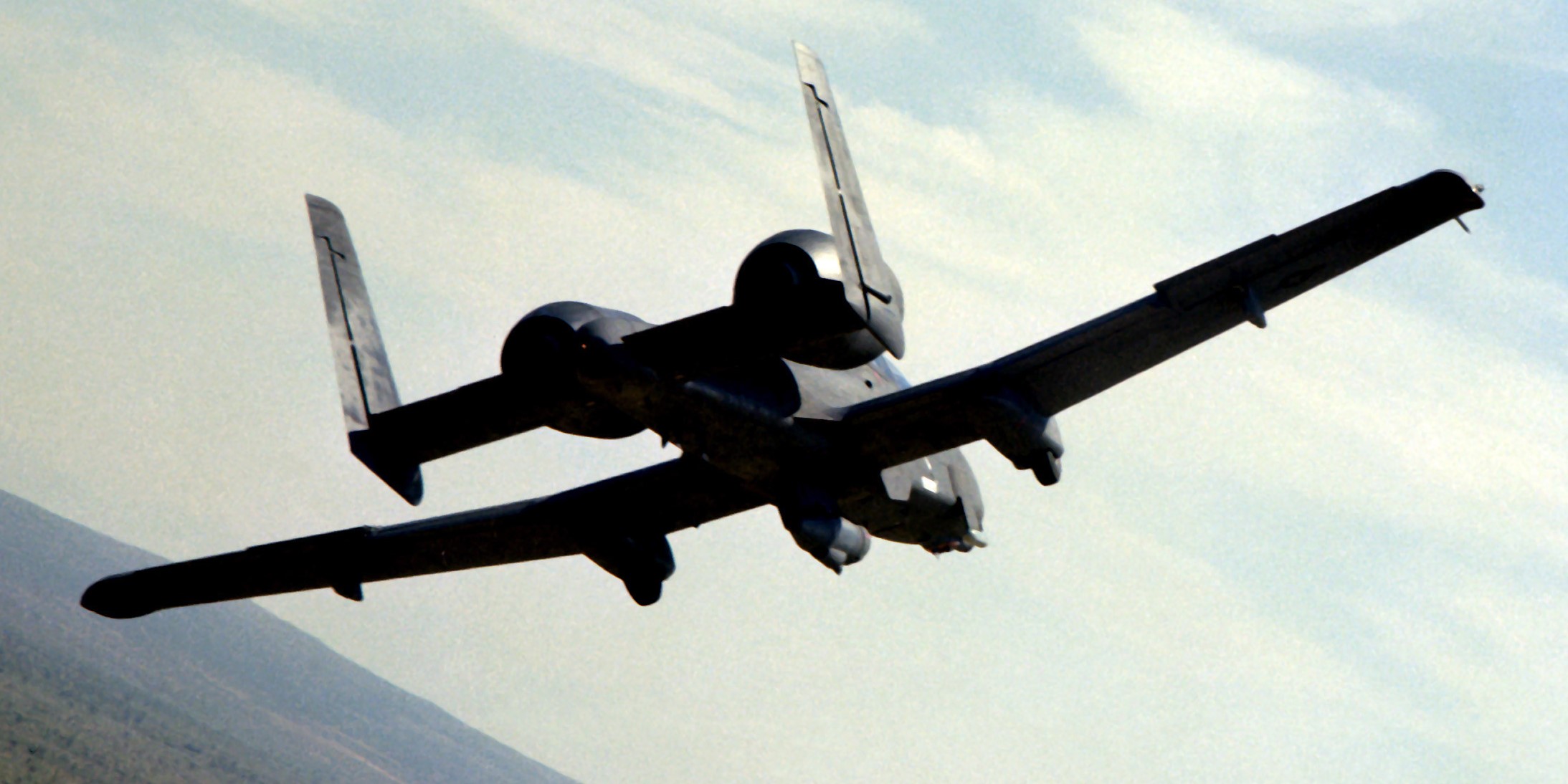
04MAY1979, photographer not known.
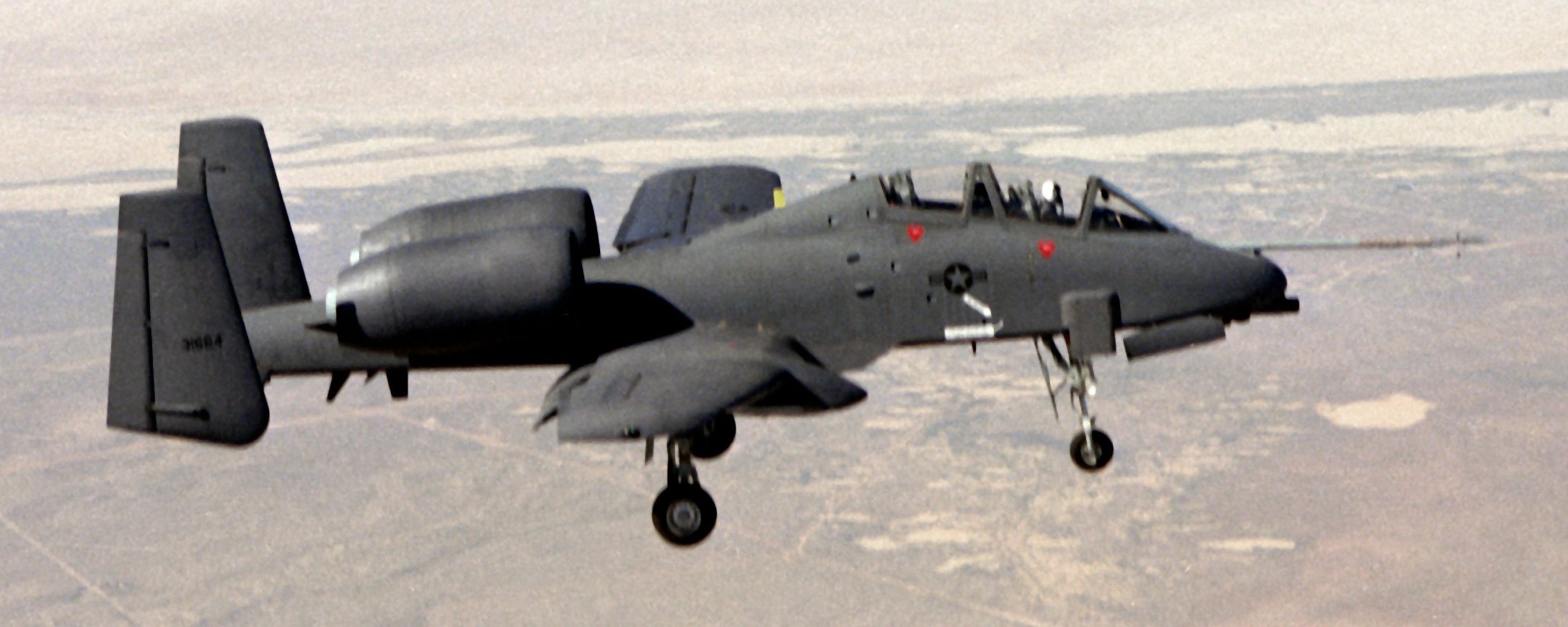
Near Rogers Dry Lake, 04MAY1979. Photographer not known.
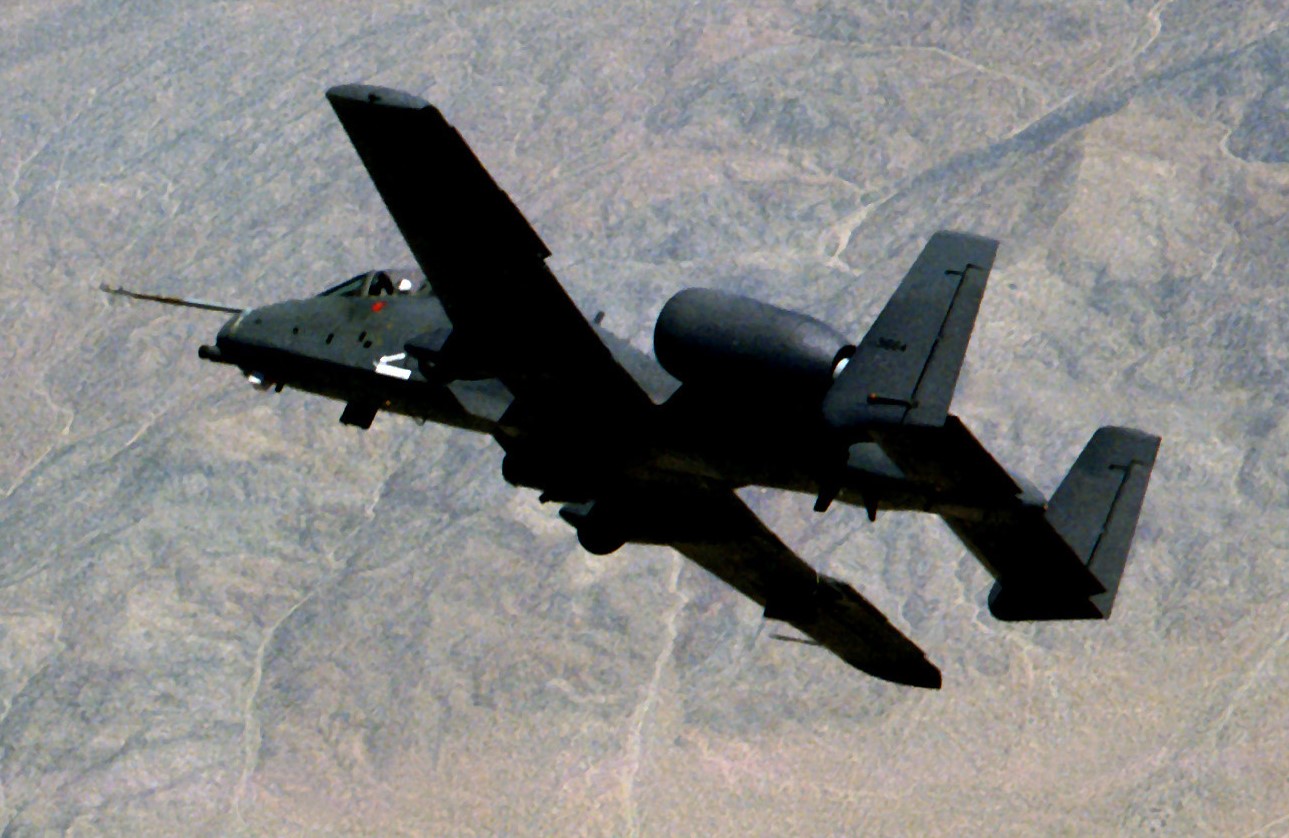
04MAY1979, photographer not known.
I read several model building blogs where it’s thought the N/AW-10 was built for the LANTIRN program, but it was actually the LANTIRN program that killed the N/AW-10 before it even got started. The two seat A-10 required a second crew-member precisely because the targeting pods it used required a separate weapons/targeting systems operator, the LANTIRN system does not.
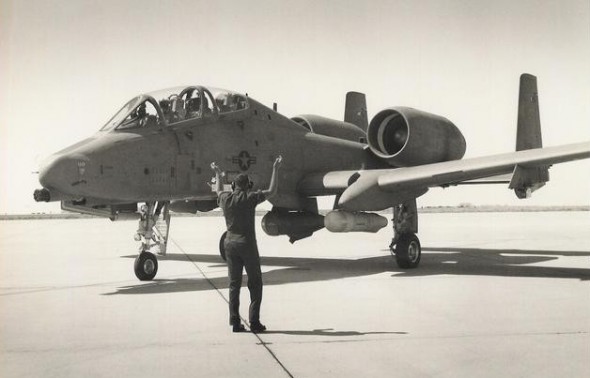
Freshly painted nose art, no more nose probe.
The N/AW-10 used a large modified weather radar pod under its port wing (inboard) and a large laser-combo-infrared (FLIR) pod mounted centerline.
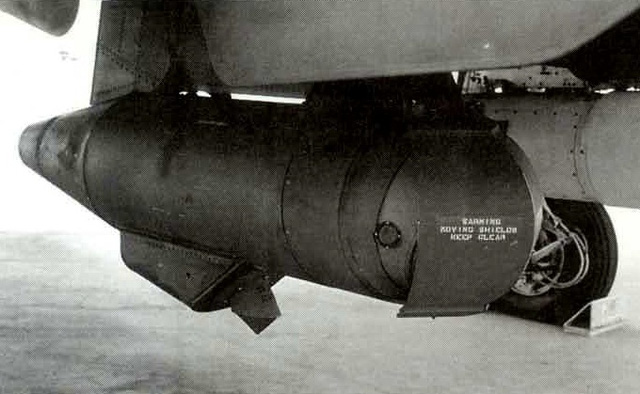
Laser-combo-FLIR pod.
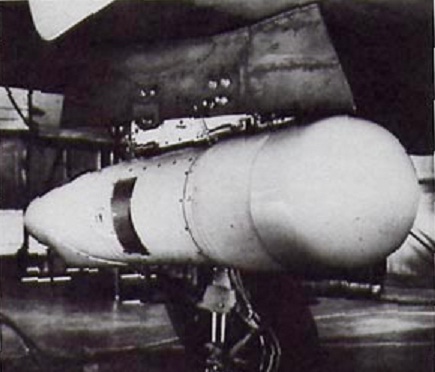
Modified WX radar pod.
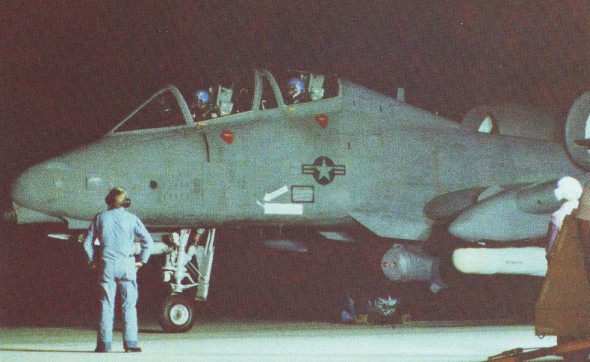
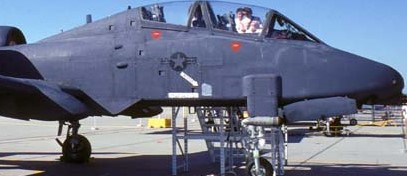 Also, the Pave Penny system (in the small pod below the cockpit on the starboard side) was replaced with a low light TV (LLTV) video camera.
Also, the Pave Penny system (in the small pod below the cockpit on the starboard side) was replaced with a low light TV (LLTV) video camera.
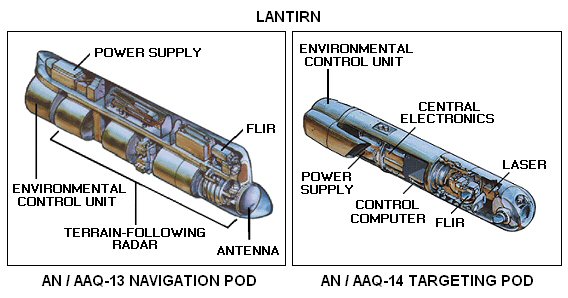
The LANTIRN system uses two pods, but they’re much smaller and can be operated by the pilot.
I worked on the Edwards Air Force Base bombing range in the early 1980s, right after the promise of the LANTIRN killed-off the N/AW-10. LANTIRN missions were carried out late in the evening, and at night. As range techs we had to operate the static and portable infrared target boards (IR Boards). The missions were flown by single seat A-10s, F-16s and I think even an F-16XL.
The portable IR Boards used large towed field generators to create the power to heat them up.
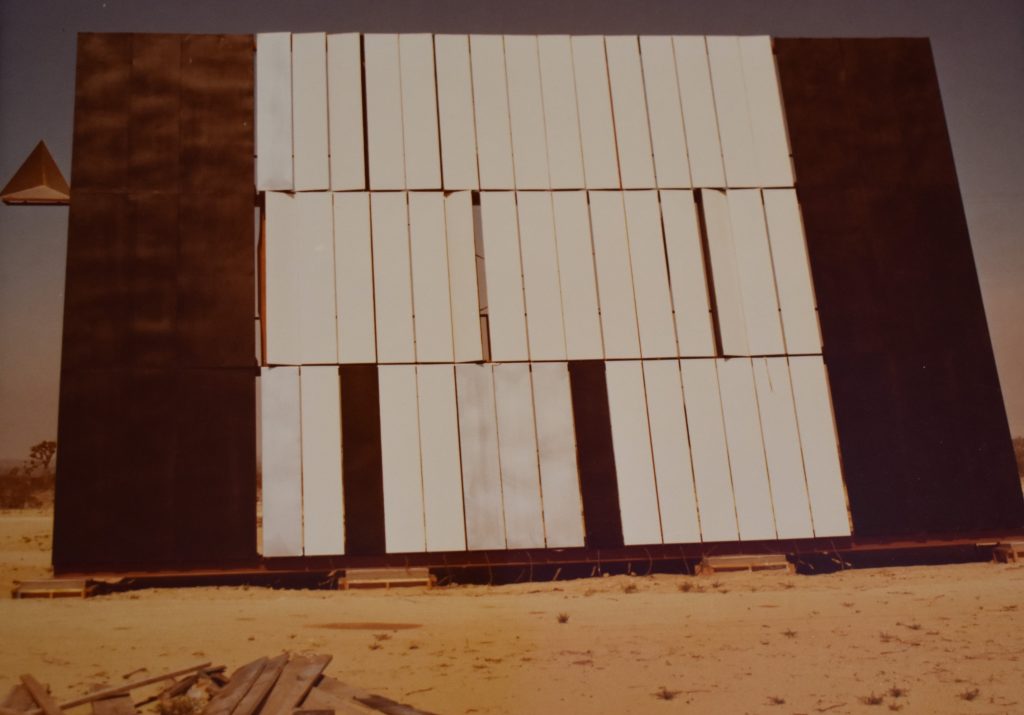
Static IR Board just after completion. Note wires at bottom of adjustable panels. The aluminum triangle on the side is a radar reflector.
The static board was two stories tall and looked like a small drive-in movie screen. It had movable individually heated vertical panels, one side white, the other black. We got to sit behind the static panel and watch the low flying airshow. By the way, being a Army National Guard armor crewman I learned that you can’t hear the A-10 if it’s flying right at you, kind of like you can’t hear the bullet that kills you.
The LANTIRN system itself has finally been outdated for U.S. military use, however, in July 2018 Lockheed-Martin got a $100-million contract to upgrade LANTIRNs being used by foreign air forces.
Many model building blogs point out nit-picky things that are wrong with the Trumpeter and Hobby Boss N/AW-10 kits, mostly stuff that also applies to the single seater.
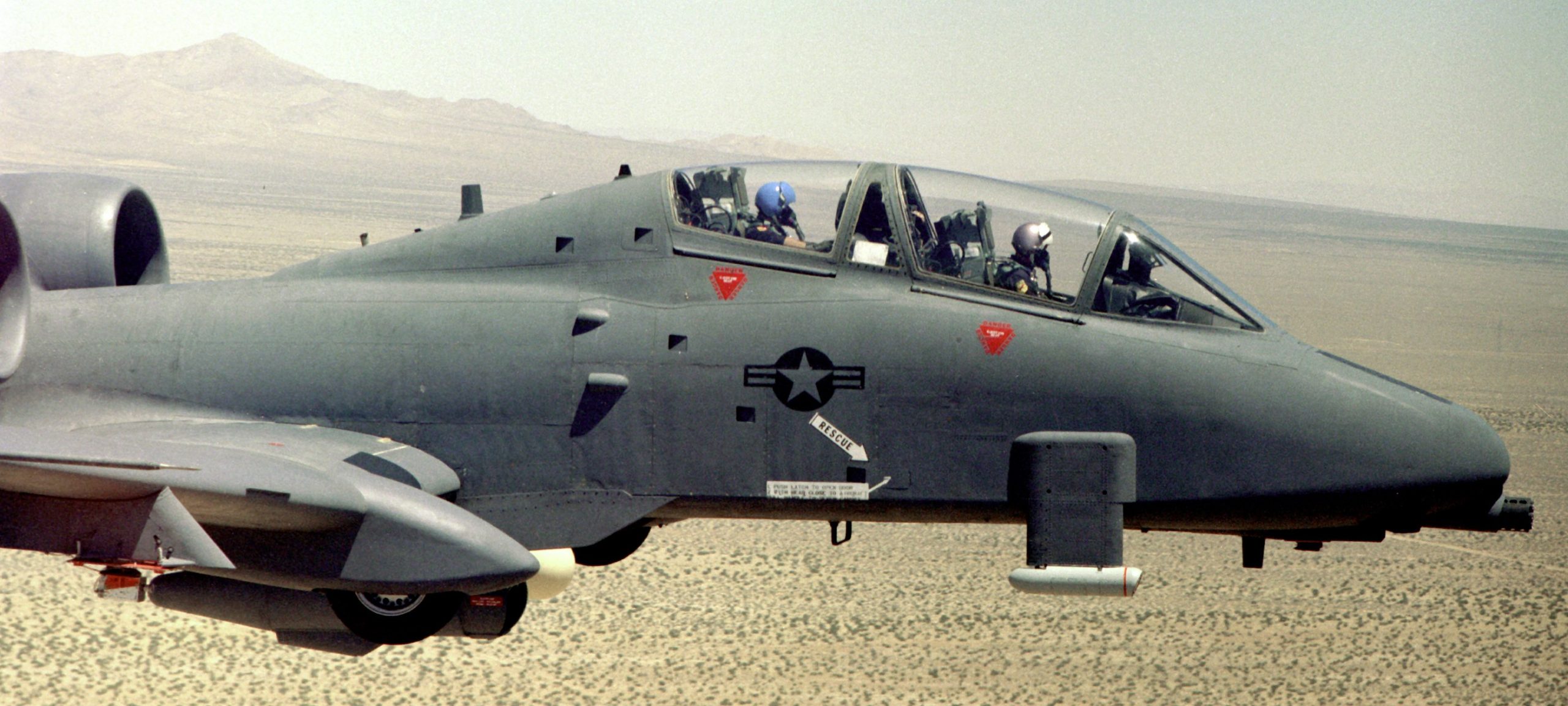
10JUL1979, photographer not known.
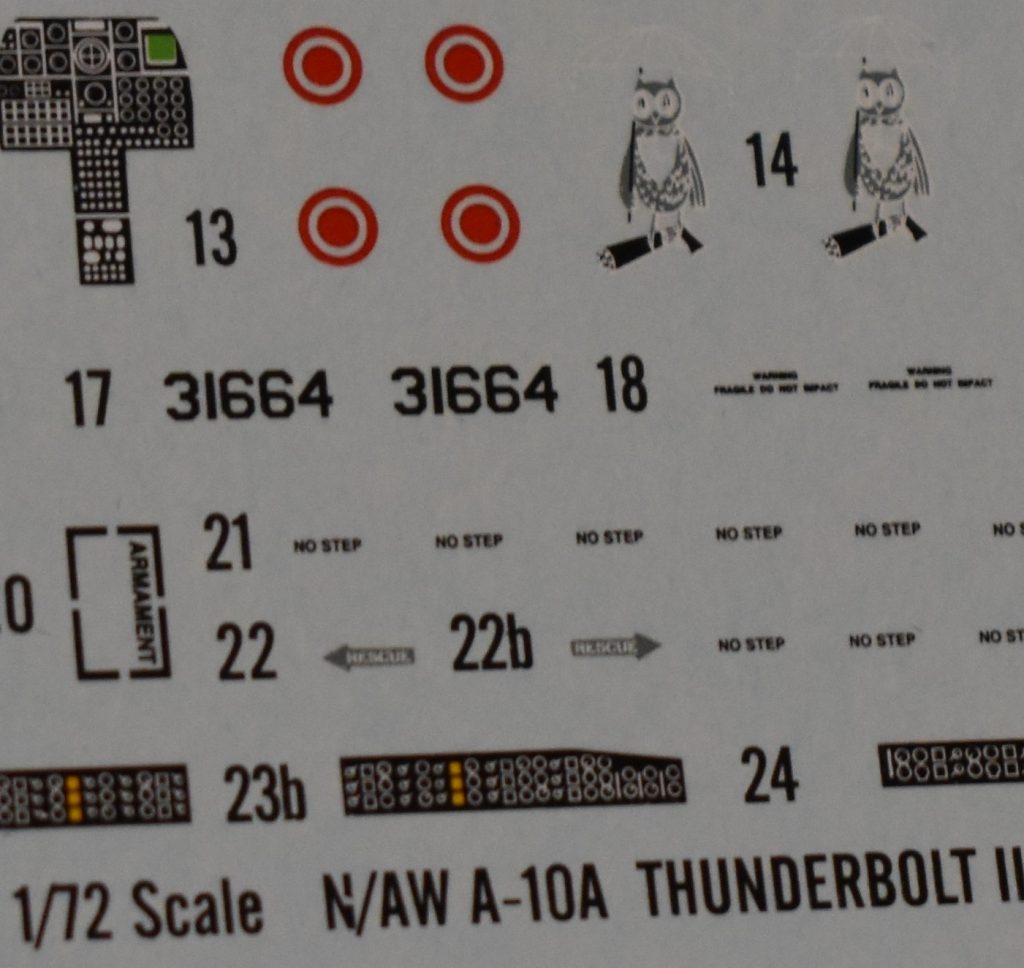
Hobby Boss’ 1:72 owl decals.
My biggest complaint is that the ‘owl’ decals are wrong, being just black outlines, and they were not on both sides of the aircraft.
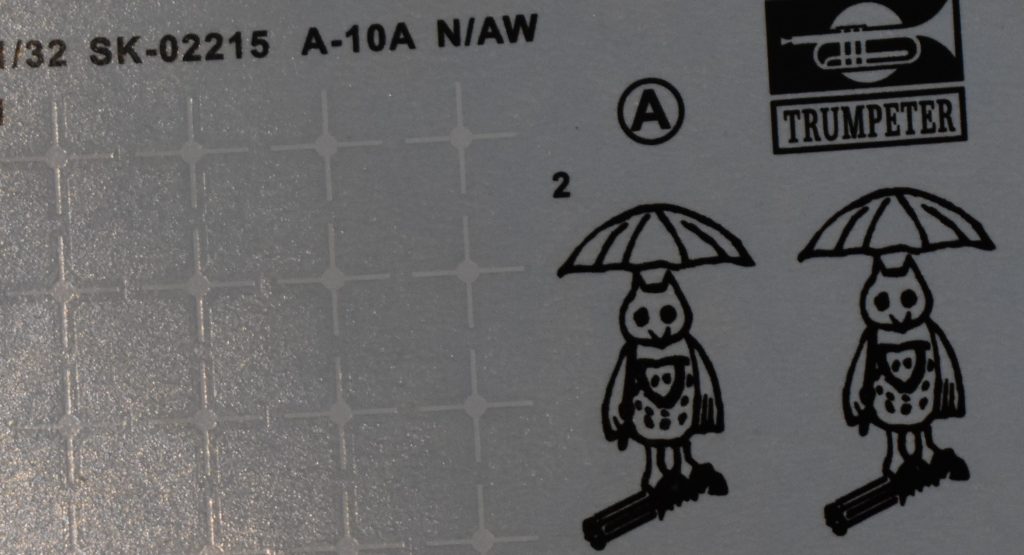
Trumpeter’s 1:32 owl decals.
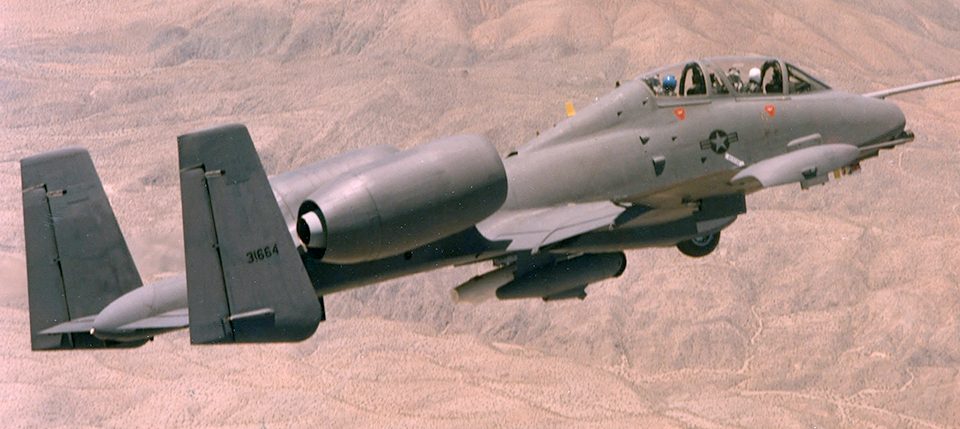
1979, photographer not known.
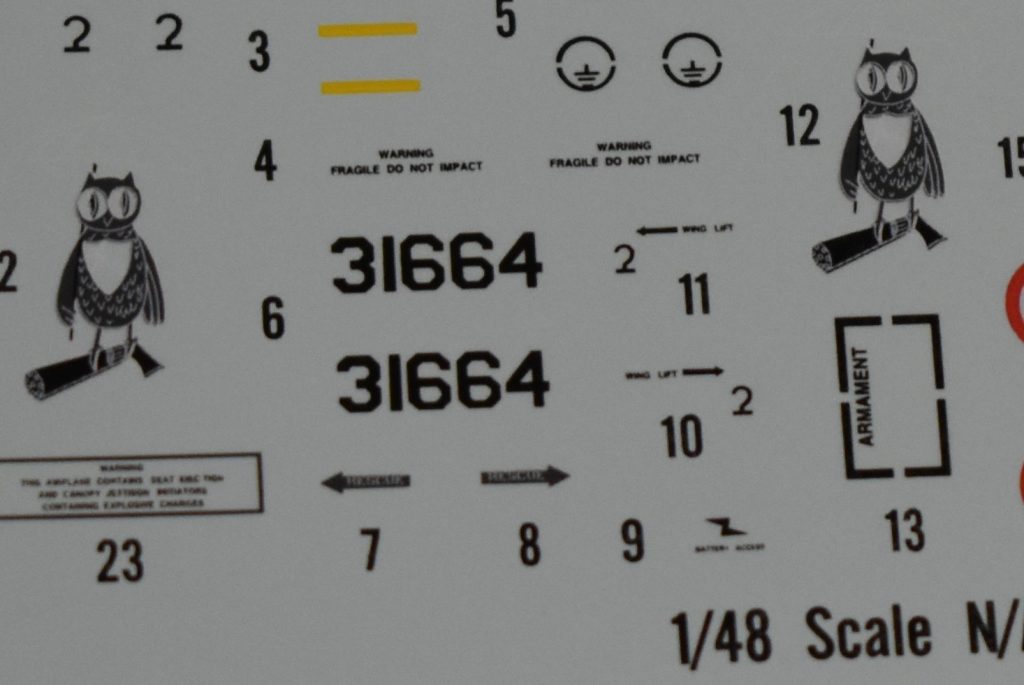
Hobby Boss’ 1:48 owl decals.
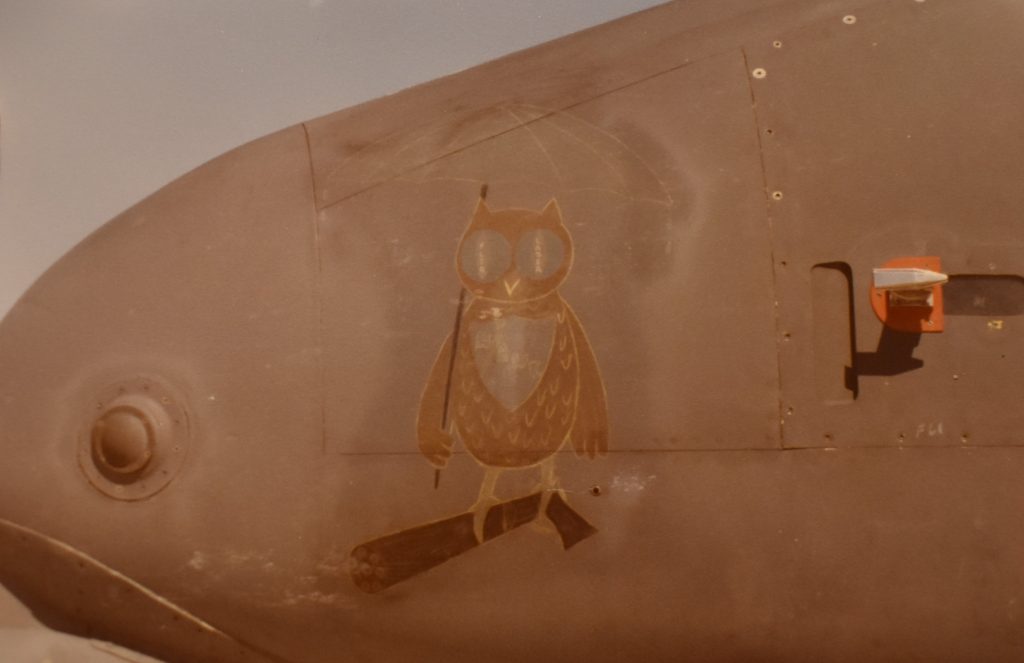
Early 1980s, photo by me, AAron B. Hutchins.
During the 1981 Edwards AFB open house I took a photo of the N/AW-10 owl nose art. It’s not just a black outline. Official USAF photos also reveal that initially it had a blue umbrella, and it was located only on the port side of the nose.
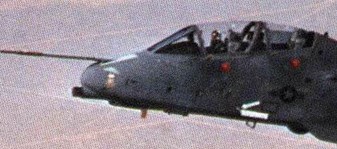
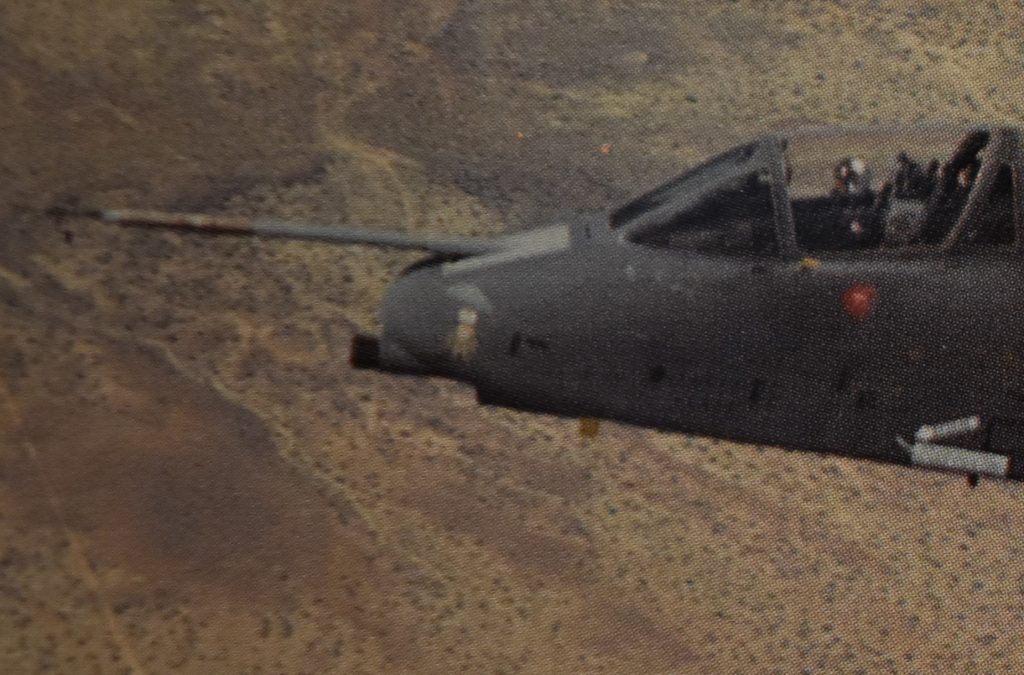
The first flight of the N/AW was in 1979, photos show a bright colorful owl, blue umbrella, brown feathers, blue eyes and breast shield (also note the nose probe). My photo, taken a couple of years later, shows the umbrella so faded that you wouldn’t know it was there.
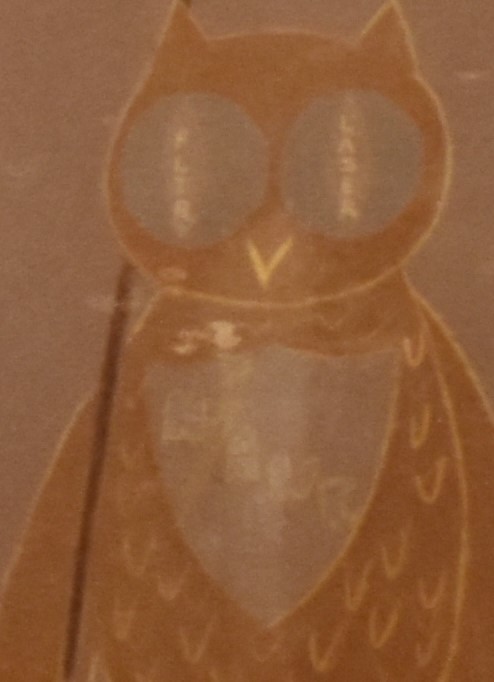
Photo by AAron B. Hutchins, 1981.
The eyes contain the words FLIR and LASER, the breast shield says N/(the slash is in the form of a lightening bolt)AW and an additional letter I can’t make-out, and it’s outlined in white not black. The latest pics of the now ‘gate guard’ (Edwards Museum display) N/AW shows the owl nose art is no longer present as the aircraft has been painted a different color.
Also, the white cross markings on the vertical tails were used for only a short time, towards the end of the program. 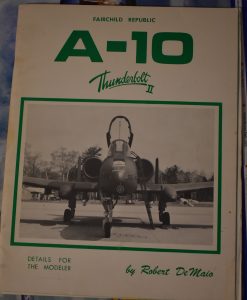 Robert DeMaio, in his rare self-published book A-10 Thunderbolt II: Details for the Modeler, says the original overall color of the N/AW was FS36118 Dark Grey.
Robert DeMaio, in his rare self-published book A-10 Thunderbolt II: Details for the Modeler, says the original overall color of the N/AW was FS36118 Dark Grey.
Another major problem with all available N/AW kits is that they don’t provide you with the giant laser-FLIR pod or the giant modified Westinghouse WX radar pod. 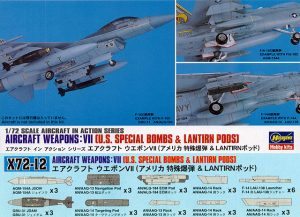
I’ve seen many modelers incorrectly add the LANTIRN pods to their YA-10Bs.
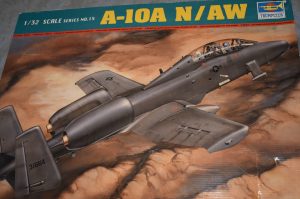
One other major problem with the Trumpet 1/32 scale kit is that the engineers who designed the two-seat fuselage failed to match-up the surface detailing with the parts originally designed for the single seater. Specifically the single seater rear fuselage has raised rivets (correct) while the two-seat fuselage parts have recessed rivets (no such thing in real life, I call them divots). Then there’s the problem that applies to both the N/AW and A-10; the surface detailing of the flying surfaces don’t match the fuselage, have fun rectifying that for a contest build.
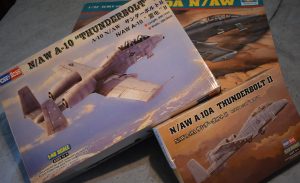
Hobby Boss makes the 1/48 and 1/72 scale versions of the N/AW. Their 1/48 scale kit comes with a bunch of weapons, and the surface detailing is uniform across fuselage and flying surfaces; recessed panel lines and divots (recessed rivets).
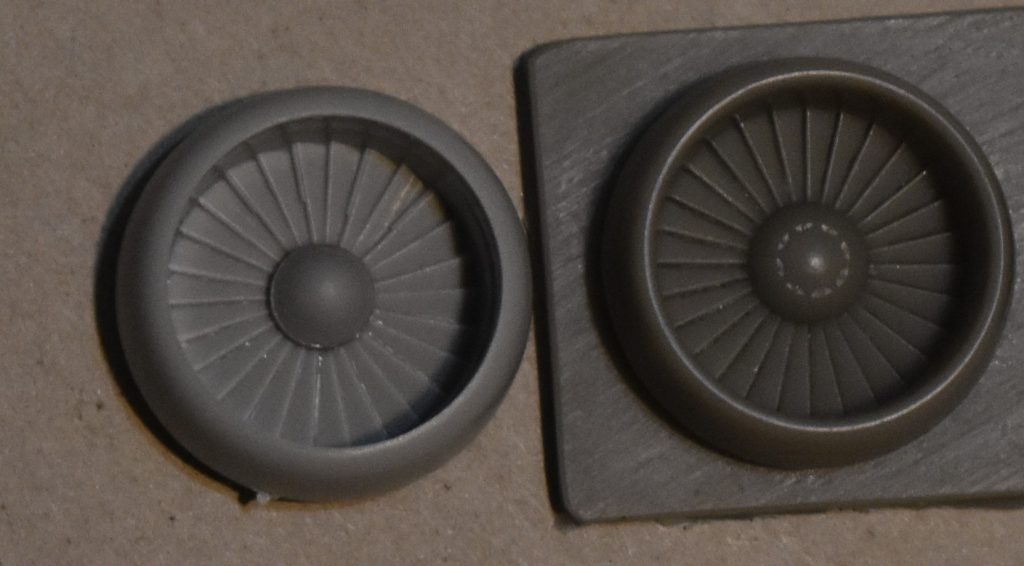
1:72 resin intake compared to kit intake.
The 1/72 scale Hobby Boss kit is basically one of their Easy Assembly kits as the simplified major parts literally snap-together. But the engine intake openings are too small, which can be fixed by resin correction parts. It has recessed panel lines (no rivets no divots), yet there are no weapons.
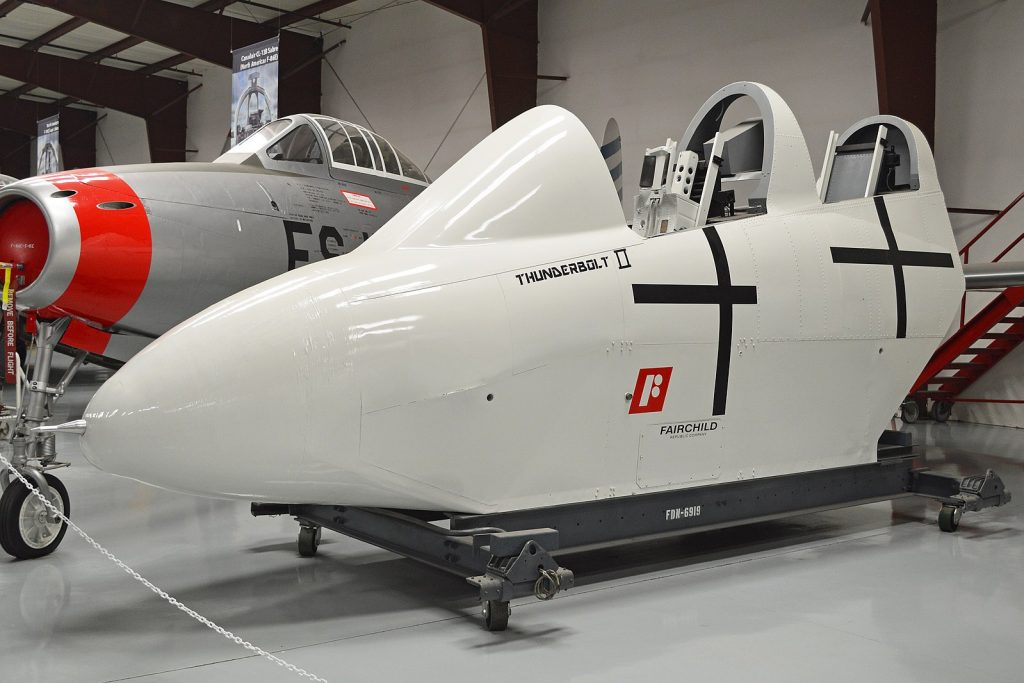
YA-10B rocket sled, used for ejection seat tests at Holloman AFB, New Mexico. Now at Chino Museum in California.
In the rare book A-10 Thunderbolt II: Details for the Modeler, the author explained that the rocket sled used for ejection seat tests revealed that the side opening canopies interfered with the ejection process. It was planned to fit a single clam-shell canopy on production models.
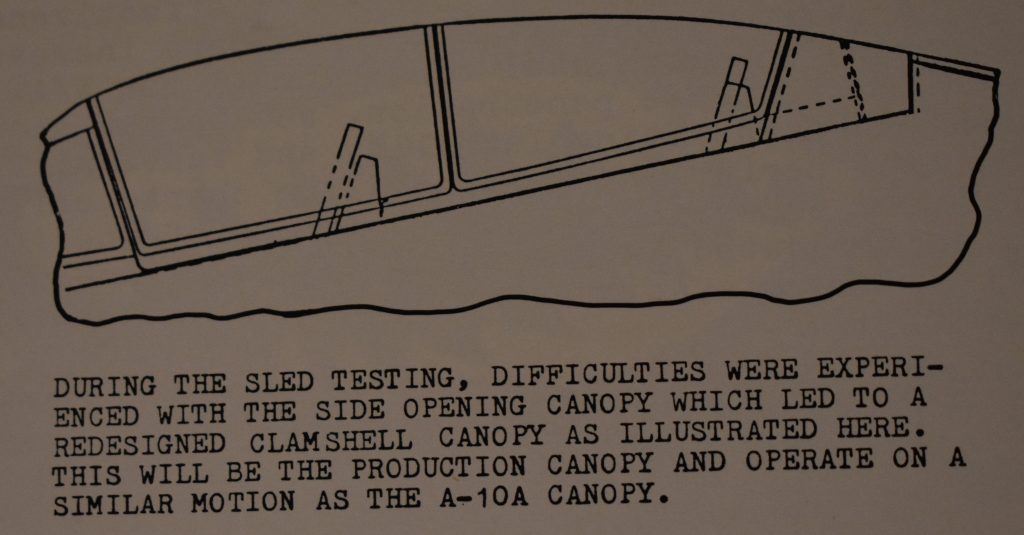
Proposed N/AW clam-shell canopy.
Despite the YA-10B (N/AW-10) being so short lived it has always been something model builders wanted to build. 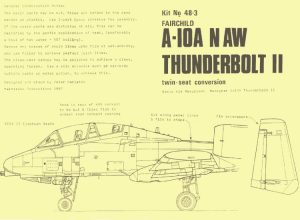
In the late 1980s and early 1990s conversion kits were made available by Falcon (1/72 scale) and Maintrack (1/48 scale for Monogram kits), but also failed to provide the unique laser-FLIR and WX radar pods. 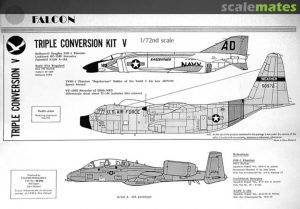
Monogram’s B-25 PANCHITO!
C-47 kit round-up
F-8C DFBW conversion
1/48 F-105G WILD WEASEL SHOWDOWN, HOBBYBOSS VS MONOGRAM

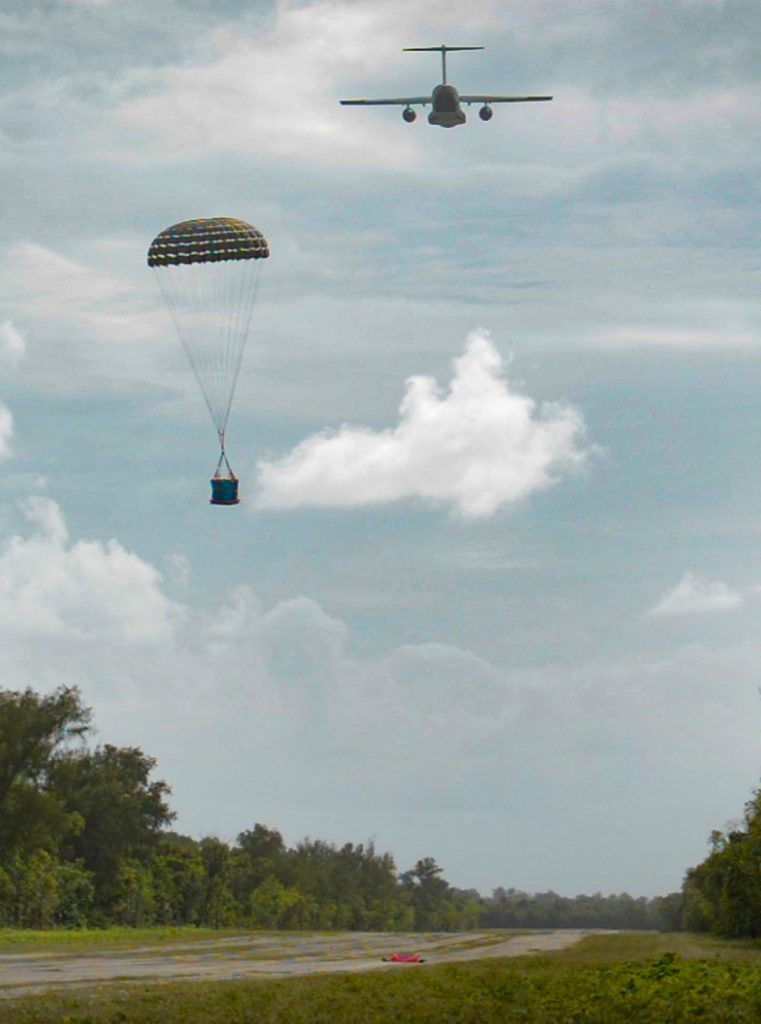
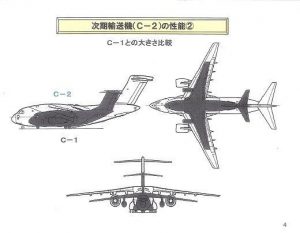


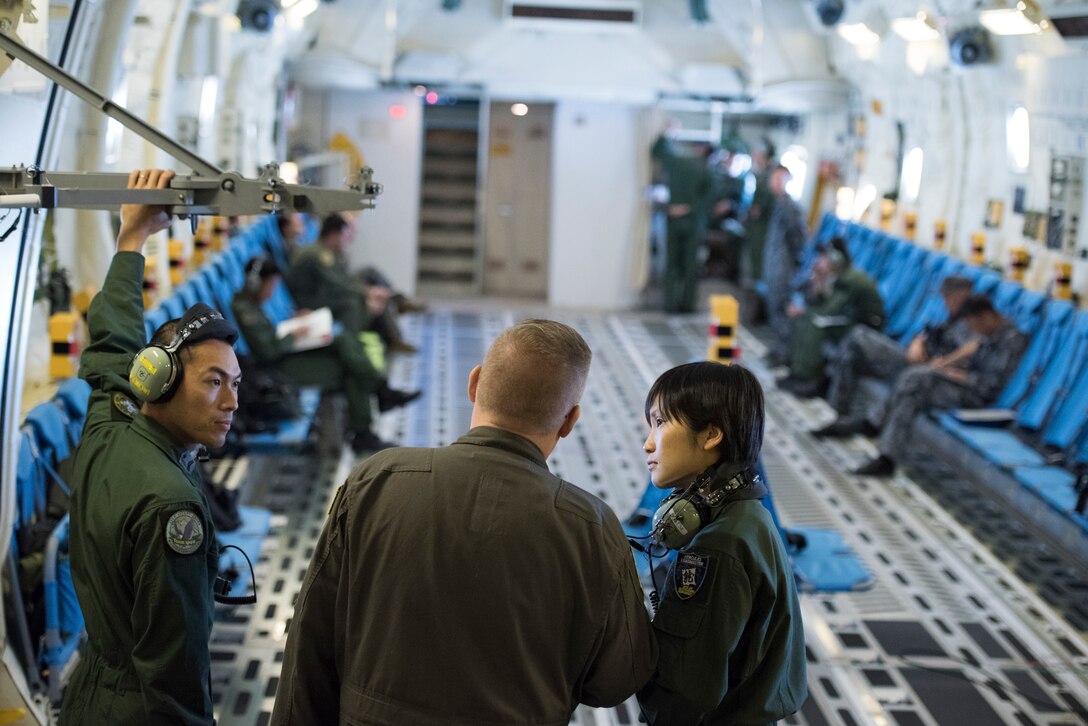



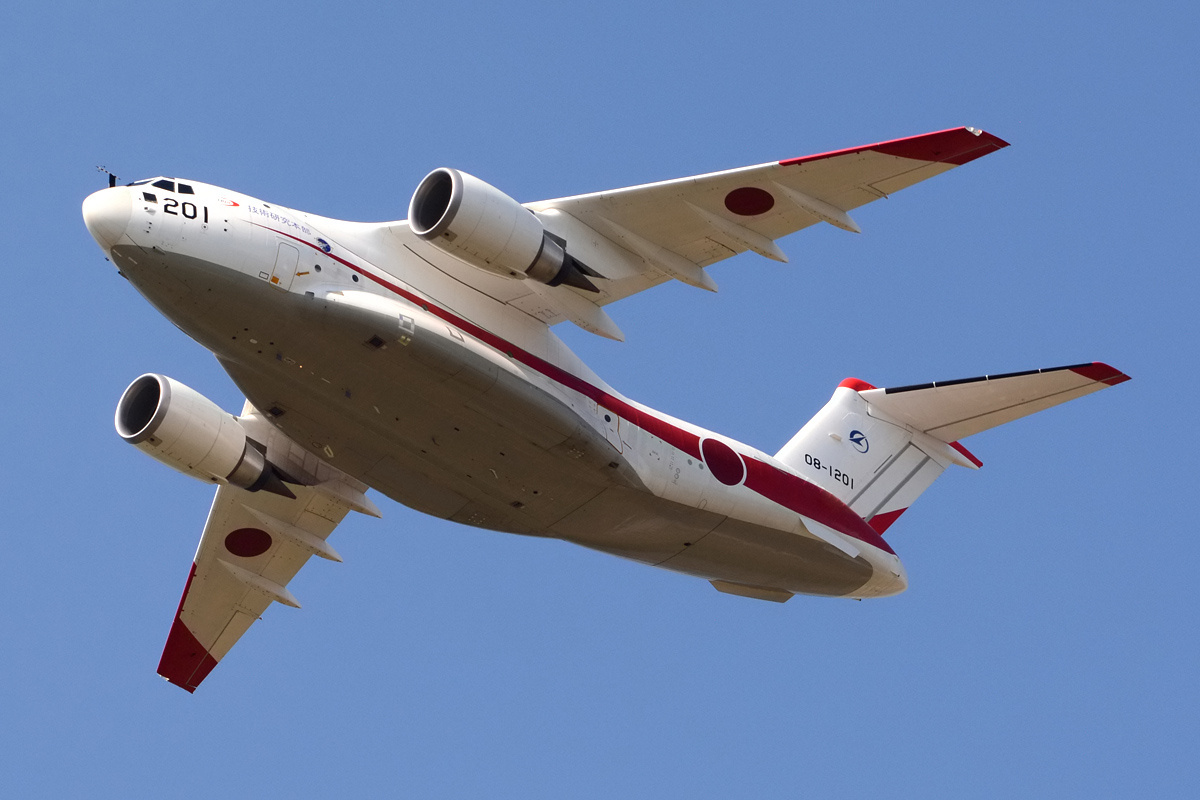





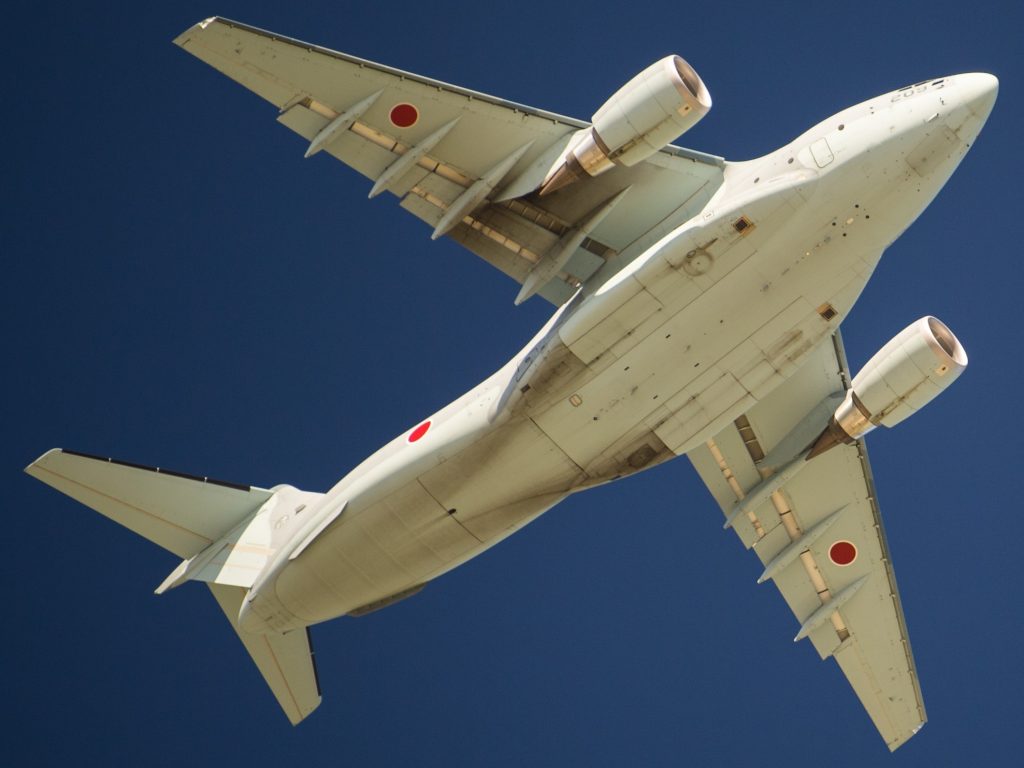
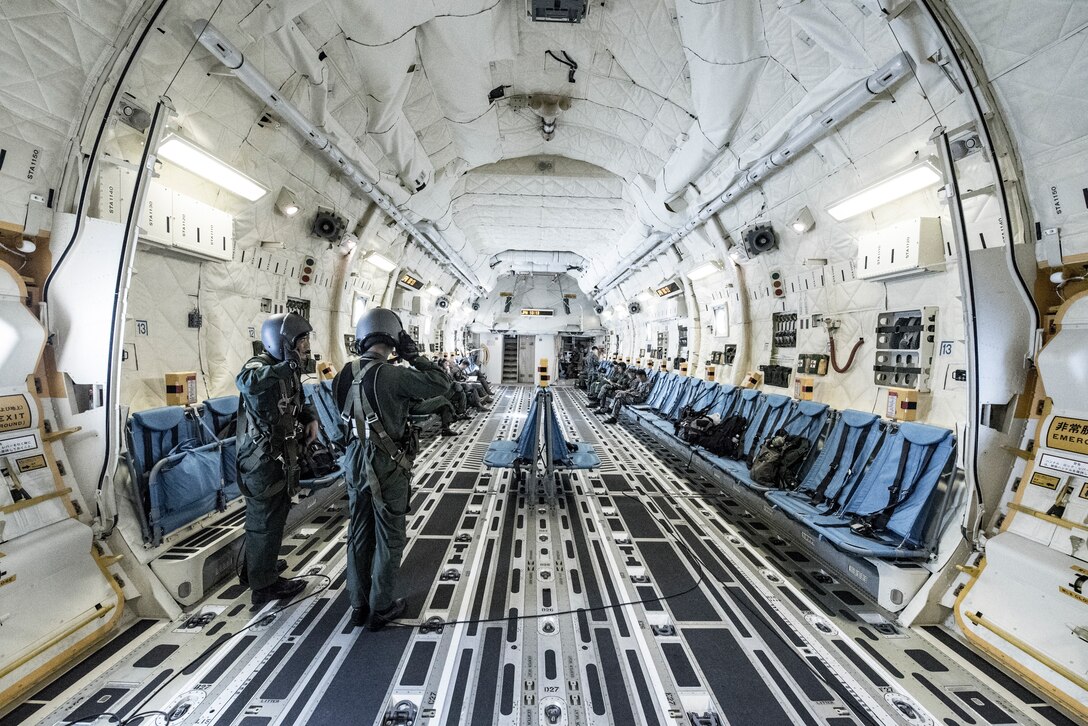
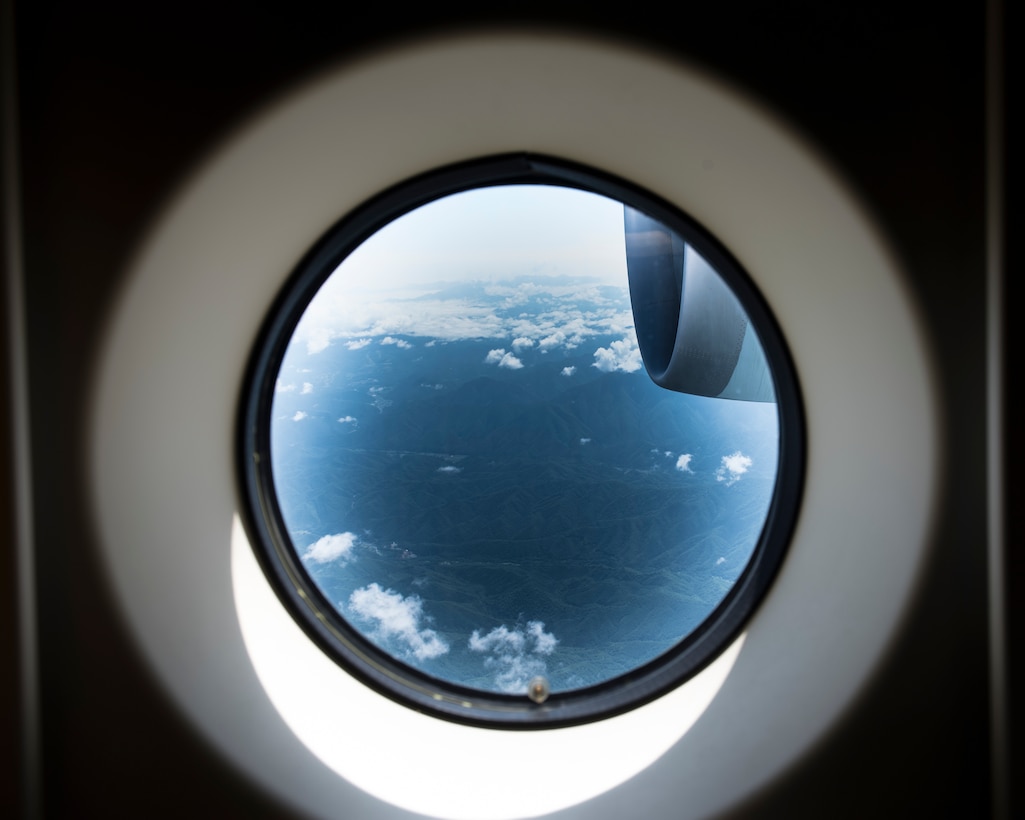
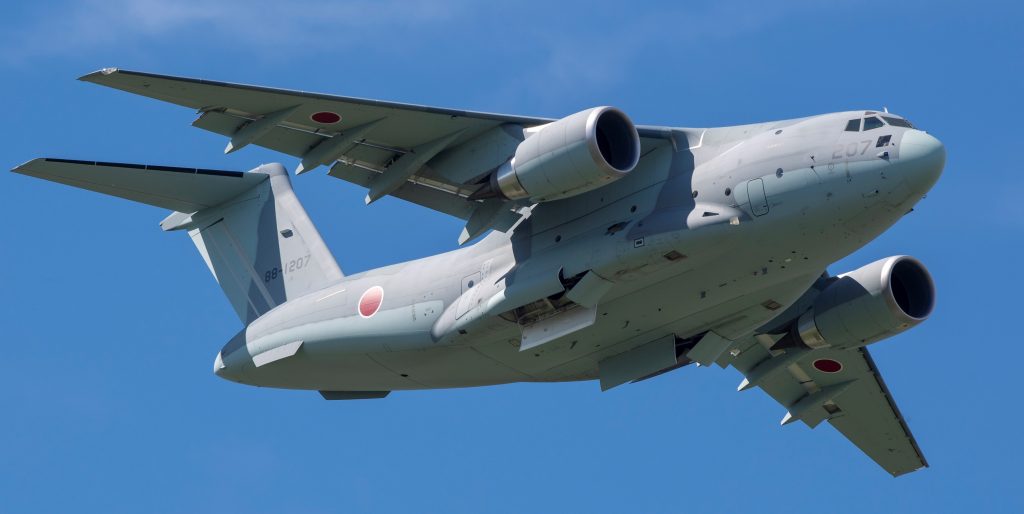
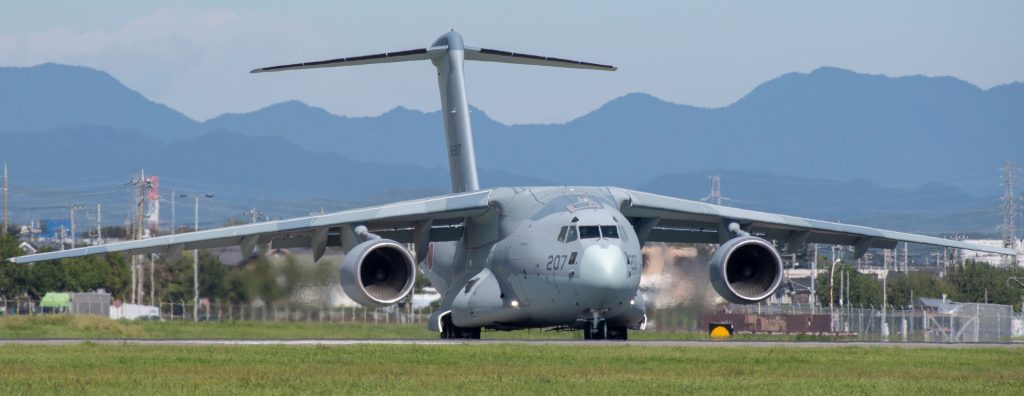






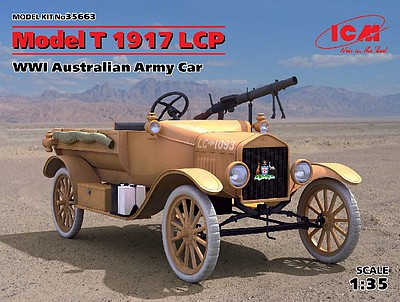


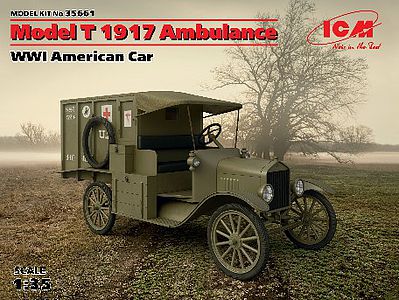





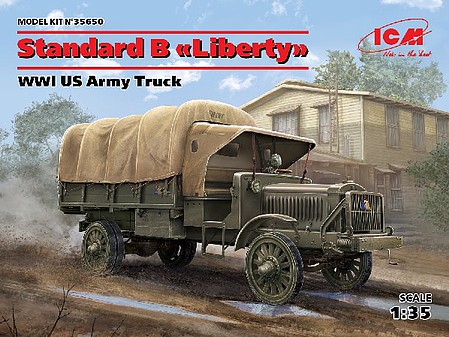





 The driver’s seat sits on the fuel tank.
The driver’s seat sits on the fuel tank.

































































